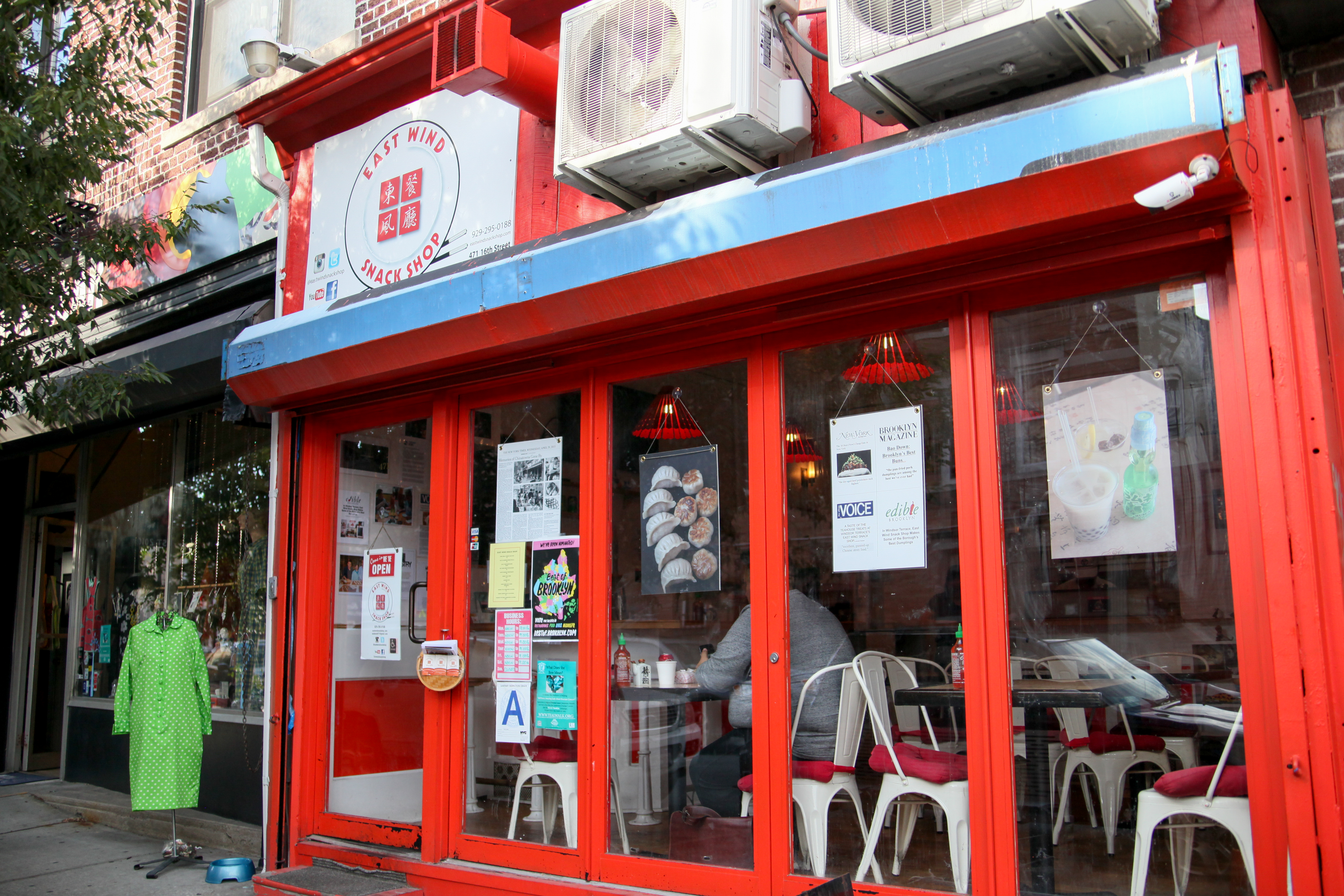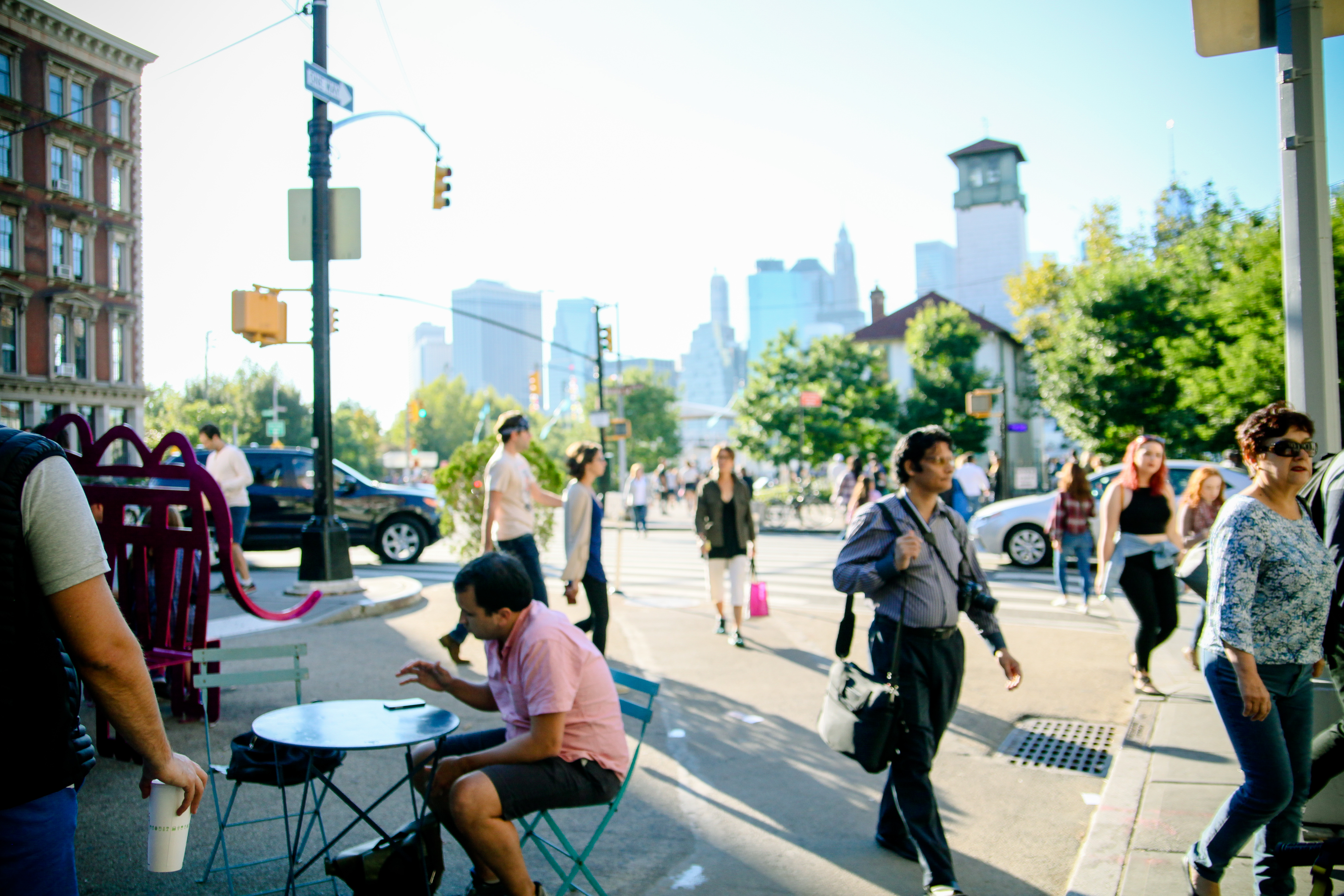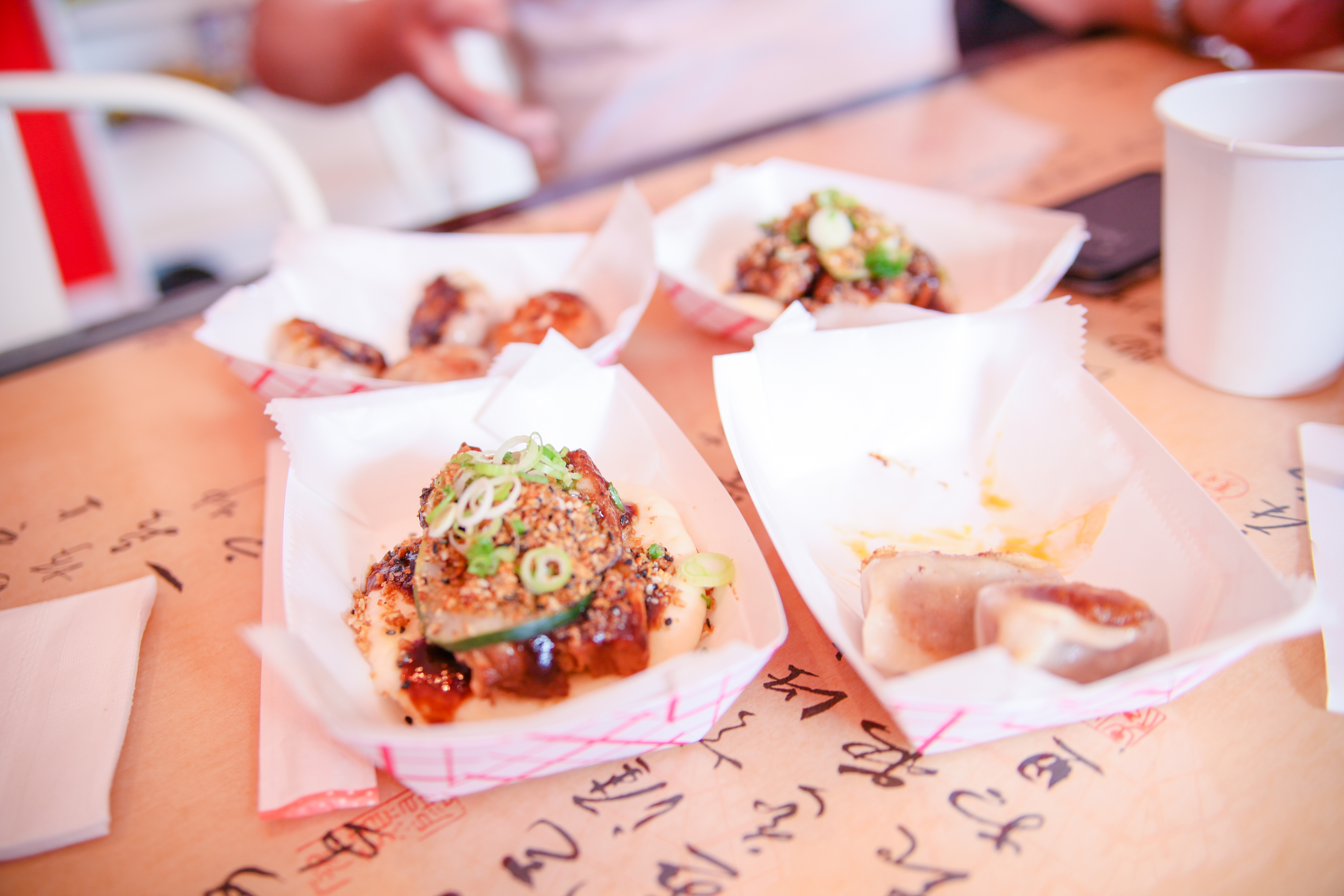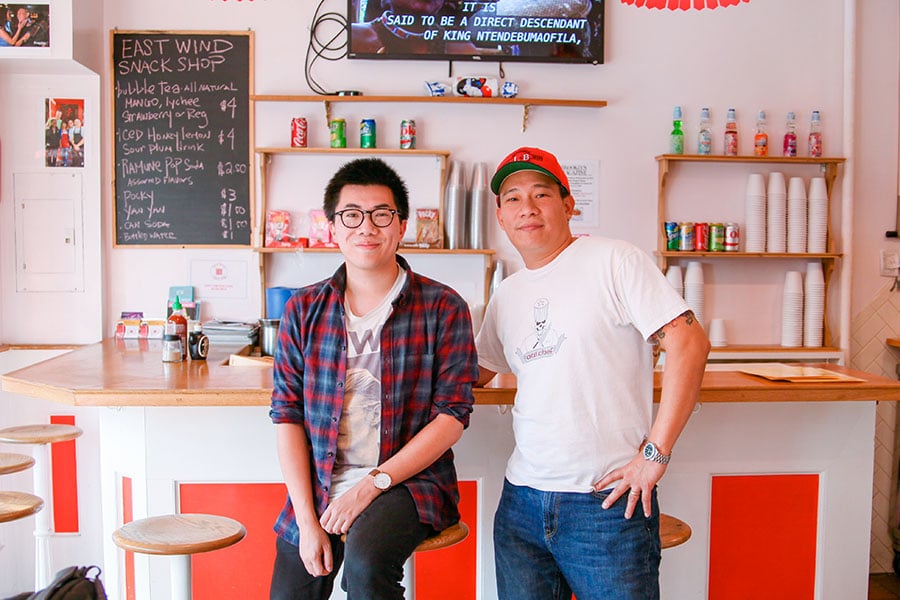Everyone’s Googled their own name. That’s how I found another Chris Cheung on the other side of the continent, one who happened to be a pretty famous chef in Brooklyn. He was also a bit of a philosopher, I learned after I added him on Twitter.
“Very fitting to follow yourself, but not yourself,” Chris Cheung tweeted at me. “I’m following you back!”
The New York Chris Cheung, Google told me, had worked under big names like Jean-Georges Vongerichten and Masaharu Morimoto, Japan’s “Iron Chef,” in three and four star kitchens. A New York Times food critic in 2001 raved that he “uses the vast expanse of Asian cuisine as a palette of exotic colours.” He’d even appeared on Anthony Bourdain’s No Reservations.
In comic books and sci-fi, alternate selves usually prove to be trouble, but I was quite happy to learn that my name-twin was doing well. And I kept wondering what it might be like to meet Chris Cheung in person, maybe even share a meal.
Which is why, earlier this fall, this Chris Cheung went to Brooklyn is search of that Chris Cheung.
Devouring history
On a warm Tuesday afternoon, I found the bright red storefront of East Wind Snack Shop near a deli, a pie shop, and Brooklyn’s Prospect Park. Windsor Terrace is a neighbourhood of families, many with Irish-American roots. High-rises have been banned here. It’s one of those neighbourhoods where everyone says hello, but is slowly gentrifying nonetheless. East Wind Snack Shop is a little space with kung fu DVDs on a shelf, boxes of Pocky on the wall, limited tables, and a small, open kitchen in the corner.
Was I in the wrong place? This hole in the wall hardly seemed one of the upscale kitchens where Chris Cheung had made his name.
A man with a red apron inside had his back to me when I walked in.
“Chris Cheung?” I said.
The man turned around. “Hey!” said the other Chris Cheung. This was, indeed, his restaurant. He opened it last year.
We shook hands. (There was no universe imploding moment when we did.)
The first thing we talked about? Other Chris Cheungs.
“There’s a doctor, there’s an engineer, and there’s a guy who owns hotels,” he said. “I think I’ve seen him run into some trouble; he’s had some bad press.”
“Misrepresenting the Chris Cheungs,” I said, shaking my head.
“Exactly,” he agreed.

We sat down and he immediately handed me the menu, a humble list of treats like buns, dumplings, and ribs. You could eat through the whole menu for less than $45.
“Food is the cheapest way to travel the world,” said the other Cheung, “and it’s also a cool way to go back in time.”
It turns out, the dishes of the menu carried a history that began before Cheung decided to become a chef, a history that stretched back to Manhattan’s heyday of sweatshops and Chinese migration to America.
This other Chris Cheung has tasted the past, present, and future of Asian cuisine. He’s cooked in a village outside of Shanghai with fresh ingredients, where “nothing saw the inside of a refrigerator.” He grew up with immigrant food cooked to keep immigrants going in a new home. And he’s cooked Asian cuisine alongside starred icons in entrepreneurial New York kitchens.
“For many years, Chinese food was looked down upon,” said Cheung. “It had no real culinary value, and there’s the stigmas: MSG, or that it was dirty, or that we ate crazy things. Now, it’s viewed as a culinary giant and up-and-coming food style everyone wants to check out. That’s where a lot of chefs now are pushing the envelope, though they might not be totally authentic.”
In his Italian Brooklyn accent straight out of a Scorsese movie, Chris Cheung explained to me that he was born in the nearby neighbourhood of Bensonhurst, but as a teenager in the 1970s and ’80s, he would cross the Hudson to visit his grandmother in Manhattan’s Chinatown. The enclave at the time was a hive of activity, with a workforce of 30,000 toiling in sweatshops – and fed by Toishanese coffee shops. They were opened by immigrants from the Toishan countryside of Cantonese China who had made their way to America. Their buns, shrimp dumplings, and meats-over-rice fueled Chinatown seamstresses and construction workers through 12 to 14 hour shifts.
That’s where Chris Cheung learned that if you want to eat, you have to fight. In those coffee shops, with their steaming, ready-made items lined up on counters, workers would yell and jostle to get take-out for the day. Teenage Cheung knew it was polite to let older fellows cut ahead of him in line, but manners didn’t help much if you were hungry.
“You have to get a little aggressive,” said Cheung. “Chinese people don’t really believe in lines. It’s the person at the front who speaks the loudest. You have to stand at the counter and point to what you want.”
Cheung calls the Toishanese shop owners “the unsung heroes of Chinatown.”
“They weren’t there for the tourists; they weren’t there to gain culinary stardom,” he said. “Those coffee shops got a generation through their days so they could raise the next generation.”

But in the past decade, as China’s industrial rise has decimated Manhattan’s factory scene, the Toishanese coffee shops of Chris Cheung’s youth have been closing one after another.
“Those coffee shop owners worked hard most of their lives, did exactly what they needed to do, earned enough money to send their kids through college, and those kids became doctors, lawyers, accountants, and whatever,” Cheung explained. “And then the chefs and the owners got old. And when you’re about 70, 75 years old, you look to retire. It’s a shame that a whole chunk of culinary gold from Toishan cooking is slowly dissipating.”
Cheung’s story made me reflect on our multicultural country north of America. Canada’s been called a mosaic of cultures — even a tossed salad. Over a fifth of our population are immigrants, according to the 2011 National Household Survey. But as the children of those immigrants join mainstream Canada society, what happens to the culture their parents brought to their new home? One New York Times writer says diasporas eventually diffuse, only to come together “around a dish or drink or sainted holiday,” with only “gauzy recollections” of their cultural past.
Part of the reason is the shame immigrants are made to feel about their food, the embarrassment of “lunchbox moments” when kids are teased for bringing foreign foods to school.
North American culture can be fickle, stigmatizing immigrant food for a while, then suddenly celebrating it, the two sides of treating non-white cultures as exotic. A piece last year in the Washington Post was titled “How it feels when white people shame your culture’s food — then make it trendy.”
The writer grew up on her father’s Cantonese beef brisket, which a friend declared “Chinese grossness.” It was the writer’s favourite food, but she “minimized Chinese food’s role in [her] life and learned to make pasta instead.”
“This cultural appropriation stings because the same dishes hyped as ‘authentic’ on trendy menus were scorned when cooked in the homes of the immigrants who brought them here,” she shared. “Immigrant food is often treated like discount tourism — a cheap means for foodies to feel worldly without leaving the comfort of their neighborhood — or high-minded fusion — a stylish way for American chefs to use other cultures’ cuisines to reap profit.”
‘Who am I cooking for?’
I asked Chris Cheung what he thought about this whipsaw in food culture today. He has chosen to create a modest showcase for the Cantonese-rooted meals of his youth. At the same time, some of the biggest, most expensive restaurants in New York are turning immigrant dishes into trendy dining for status seekers.
“I’ve done some of that myself,” admitted Cheung, “but it’s led me to ask myself a question: who am I cooking for? Well, who are these guys cooking for? They’re cooking for the foodies. They’re cooking for the writers. They’re cooking for the crowd that can give them the most attention for cooking that style of food. And they’re using authentic bases to get where they want. And there’s nothing wrong with it. It’s just that something does get lost in the cuisine.
“I think there’s a place for both of them, but you have to be conscious of what both of those restaurants represent. The new style of food didn’t feed Chinatown for 40 years and give birth to three generations of Chinese-Americans. Those cooks making two dollars an hour for 14 hour days had just as much pride in their craft.”
And that is why, as an act of homage and preservation, a master chef named Chris Cheung is pouring his talent in the East Wind Snack Shop.

The Washington Post writer I mentioned earlier envisioned this for a multicultural food nation: “Americans are increasingly interested in where food is sourced. Surely, that interest should extend to a meal’s cultural roots as well as its biological origins... The best meals are more than the sum of their ingredients; their flavors tell the stories of the rich cultures that created them.”
It’s a powerful vision, but there are still barriers, said the other Chris Cheung. Some cuisines like Chinese are “closely guarded” — one of Cheung’s own uncles was nervous about sharing dumpling recipes with him. Cheung felt very lucky to be mentored by a Hong Kong dim sum master. And then there’s the fears of eating something foreign, and stereotypes.
“I was on national TV,” said Cheung, “and the reporter asked me, ‘So you’re from China? I heard you have some crazy things you eat in China, like spiders on sticks and tarantulas.’”
But uncovering the secrets and blowing past the stigmas is why Cheung does what he does.
“I want to be an ambassador of Chinese food,” he told me.
As I closed my mouth around a whole dumpling, hot, soupy pork ran down my chin and onto the table. Chris Cheung, the chef and ambassador, looked on with a smile and offered his reassurance. “That’s what happens to everyone.” ![]()
















Tyee Commenting Guidelines
Comments that violate guidelines risk being deleted, and violations may result in a temporary or permanent user ban. Maintain the spirit of good conversation to stay in the discussion.
*Please note The Tyee is not a forum for spreading misinformation about COVID-19, denying its existence or minimizing its risk to public health.
Do:
Do not: